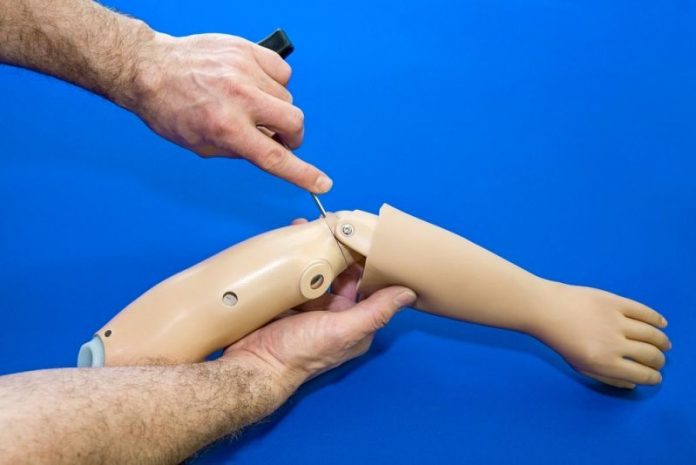A NEW device being developed at the University of Salford could help thousands of children across the world born without arms.
Researchers are creating a special unit to help youngsters with congenital conditions that mean they have to use myoelectric prosthesis – artificial hands controlled using the electronic signals generated by their own muscles.
These prosthetics are only effective if an electrode is fixed in close contact with the skin, but as artificial limbs for children are deliberately built with some ‘growing room’ in them, the electrode is often too loose to work properly especially for the first few weeks after a new fitting.
John Head, lecturer in Prosthetics and Orthotics at the University, who is leading the project, explained: “Prosthetics for children are like children’s clothes. Because they grow so quickly, their prosthetic sockets – the interfaces which house the electrodes – only last a few months, before they become too tight and new ones have to be made.
“Unfortunately, this means the child goes through a cycle in which the electrode is often too loose to work the hand effectively after a new socket fitting. Once the socket tightens up over time, the electrode contact improves and the problem diminishes, only to begin again when a new socket fitting is needed.
“This can be incredibly frustrating for the child and the parent and sadly some of them may give up trying to operate the prosthesis properly.”
John believes a crude prototype device he has built could be the answer.
The device should enable parents to adjust the electrode’s position until a visual cue, such as a green light, shows it has made optimum contact with the skin.
The original prototype is too bulky to use but John has now received a £43,810 grant from the Starworks Innovation Project, which works with the NHS National Institute for Health Research, to develop the device.
It’s an incredibly simple idea, but it could make a huge difference to these children’s lives.
His team will collaborate with the University of Southampton and work with engineers to create a much smaller working model.
John said: “It’s an incredibly simple idea, but it could make a huge difference to these children’s lives.
“We’re going to use 3D printing to create something that can be tested on patients, and hopefully this is something that can eventually be manufactured on a much larger scale.”







